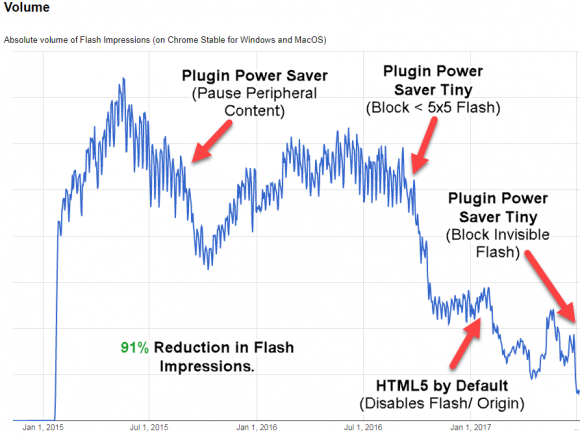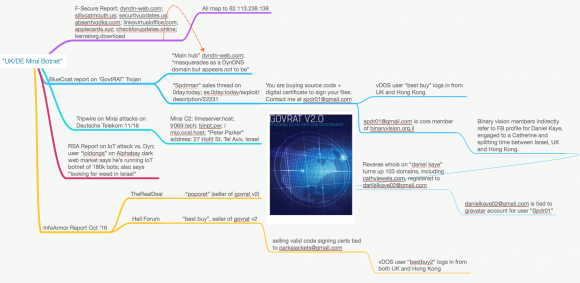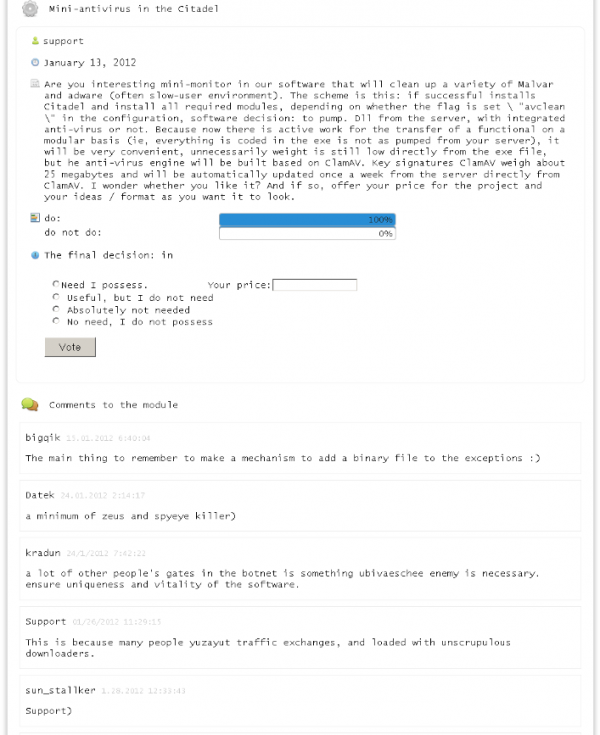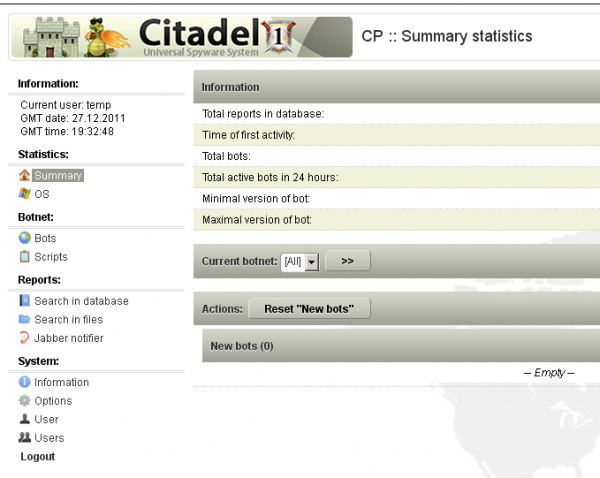Following today’s breaking news about U.S. and international authorities taking down the competing Dark Web drug bazaars AlphaBay and Hansa Market, KrebsOnSecurity caught up with the Dutch investigators who took over Hansa on June 20, 2017. When U.S. authorities shuttered AlphaBay on July 5, police in The Netherlands saw a massive influx of AlphaBay refugees who were unwittingly fleeing directly into the arms of investigators. What follows are snippets from an exclusive interview with Petra Haandrikman, team leader of the Dutch police unit that infiltrated Hansa.
Vendors on both AlphaBay and Hansa sold a range of black market items — most especially controlled substances like heroin. According to the U.S. Justice Department, AlphaBay alone had some 40,000 vendors who marketed a quarter-million sales listings for illegal drugs to more than 200,000 customers. The DOJ said that as of earlier this year, AlphaBay had 238 vendors selling heroin. Another 122 vendors advertised Fentanyl, an extremely potent synthetic opioid that has been linked to countless overdoses and deaths.
In our interview, Haandrikman detailed the dual challenges of simultaneously dealing with the exodus of AlphaBay users to Hansa and keeping tabs on the giant increase in new illicit drug orders that were coming in daily as a result.
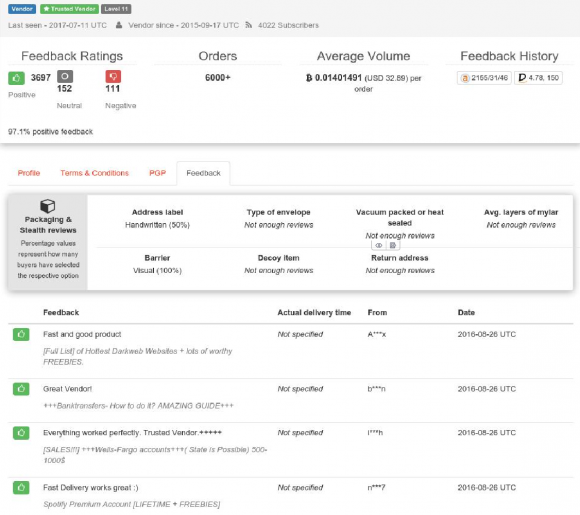
The profile and feedback of a top AlphaBay vendor. Image: ShadowDragon.io
KrebsOnSecurity (K): Talk a bit about how your team was able to seize control over Hansa.
Haandrikman (H): When we knew the FBI was working on AlphaBay, we thought ‘What’s better than if they come to us?’ The FBI wanted [the AlphaBay takedown] to look like an exit scam [where the proprietors of a dark web marketplace suddenly abscond with everyone’s money]. And we knew a lot of vendors on AlphaBay would probably come over to Hansa when AlphaBay was closed.
K: Where was Hansa physically based?
H: We knew the Hansa servers were in Lithuania, so we sent an MLAT (mutual legal assistance treaty) request to Lithuania and requested if we could proceed with our planned actions in their country. They were very willing to help us in our investigations.
K: So you made a copy of the Hansa servers?
H: We gained physical access to the machines in Lithuania, and were able to set up some clustering between the [Hansa] database servers in Lithuania and servers we were running in our country. With that, we were able to get a real time copy of the Hansa database, and then copy over the Web site code itself.
K: Did you have to take Hansa offline for a while during this process?
H: No, it didn’t really go offline. We were able to create our own copy of the site that was running on servers in the Netherlands. So there were two copies of the site running simultaneously.
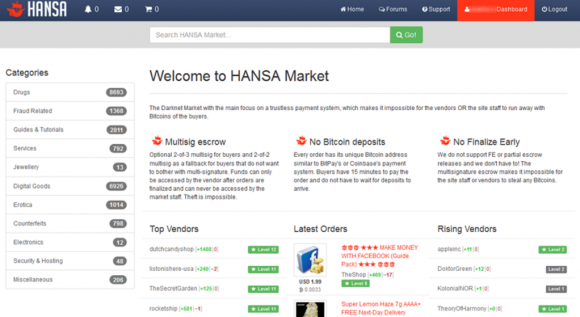
The now-defunct Hansa Market.
K: At a press conference on this effort at the U.S. Justice Department in Washington, D.C. today, Rob Wainwright, director of the European law enforcement organization Europol, detailed how the closure of AlphaBay caused a virtual stampede of former AlphaBay buyers and sellers taking their business to Hansa Market. Tell us more about what that influx was like, and how you handled it.
H: Yes, we called them “AlphaBay refugees.” It wasn’t the technical challenge that caused problems. Because this was a police operation, we wanted to keep up with the orders to see if there were any large amounts [of drugs] being ordered to one place, [so that] we could share information with our law enforcement partners internationally.
K: How exactly did you deal with that? Were you able to somehow slow down the orders coming in?
H: We just closed registration on Hansa for new users for a few days. So there was a temporary restriction for being able to register on the site, which slowed down the orders each day to make sure that we could cope with the orders that were coming in.
K: Did anything unexpected happen as a result?
H: Some people started selling their Hansa accounts on Reddit. I read somewhere that one Hansa user sold his account for $40. The funny part about that was that sale happened about five minutes before we re-opened registration. There was a lot of frustration from ex-AlphaBay users that weren’t allowed to register on the site. But we also got defended by the Hansa community on social media, who said it was a great decision by us to educate certain AlphaBay users on Hansa etiquette, which doesn’t allow the sale of things permitted on AlphaBay and other dark markets, such as child pornography and firearms.
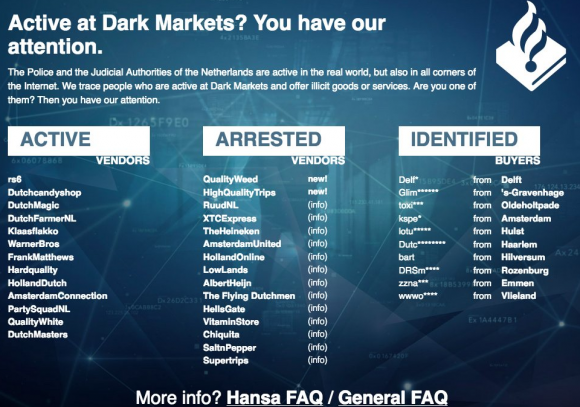
A message from Dutch authorities listing the top dark market vendors by nickname.
Continue reading →
 More than two dozen of the vulnerabilities fixed in today’s Windows patch bundle address “critical” flaws that can be exploited by malware or miscreants to assume complete, remote control over a vulnerable PC with little or no help from the user.
More than two dozen of the vulnerabilities fixed in today’s Windows patch bundle address “critical” flaws that can be exploited by malware or miscreants to assume complete, remote control over a vulnerable PC with little or no help from the user.



 In
In 